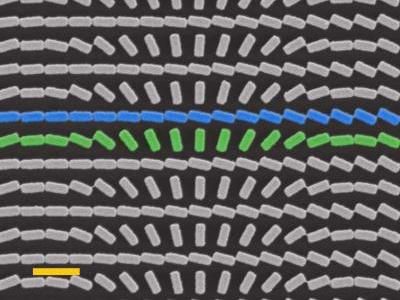Dipole orientation: New dimension in super-resolution microscopy
Advertisement
Recently, a new polarization-dipole azimuth-based super-resolution technique has been proposed by a group of researchers in Peking University (China), Tsinghua University (China), and University of Technology Sydney (Australia). It not only provides a new dimension for super-resolution, but also provides a timely solution to a recent hot debate in the field.
Since fluorescence polarization was discovered on 1926, various fluorescence anisotropy techniques have been developed to study dipole orientation of fluorophores. However, in the case of super-resolution, while other properties of fluorescence, such as intensity, spectrum, fluorescence lifetime, etc., have been well applied, little attention is paid to the direction of the fluorescence dipole (polarization). In 2014, Walla team published an article to achieve sparse reconstructed super-resolution imaging by polarization-modulating excitation . In early 2016, Keller group published a comment on this article, which stated that fluorescence polarization adds little additional information to (fluorescence intensity) super-resolution. This raised an interesting debate: whether the polarization modulation can bring super-resolution information or not ?
However, both the Walla and Keller groups investigated this problem from a conventional fluorescence intensity point of view. Taking into account fluorescence intensity and fluorescence anisotropy, this work introduces the dipole angle to distinguish fluorescence through the fourth dimension of the fluorescence, and perfectly answers this controversy .
Traditional fluorescence anisotropy techniques are limited to samples of relative uniform polarization. Fluorescence polarization would be affected by a bulk of fluorophores due to Abbe's diffraction limit, when it comes to complex samples. SDOM utilizes polarization modulation of excitation laser and demodulation of both intensity and polarization, which improves the spatial resolution as well as the detection accuracy of dipole orientation. With the additional information of fluorescence polarization imposed on the original super-resolution intensity image, Xi group has observed several interesting findings in biological samples. At the same time, SDOM technology has a very fast imaging speed (up to 5 frames per second super resolution), the excitation light power requirements are very low (milliWatts level), is ideal for live cell observation. The observation of living yeast cells is demosntrated herein.





























































